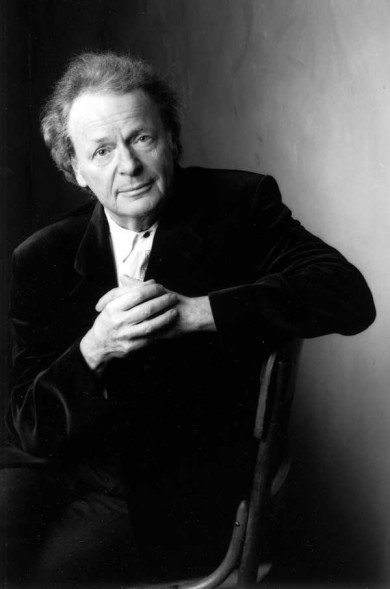Kuerti doubles up, masterfully, with two concertos at Kravis in Palm Beach

Anton Kuerti performed piano concertos of Mozart and Beethoven Tuesday night at the Kravis Center in West Palm Beach.
One of the highlights of recent South Florida music seasons has been Anton Kuerti’s continuing cycle of the complete sonatas and solo piano works of Beethoven for Miami’s Friends of Chamber Music.
Kuerti returned as concerto soloist on Tuesday night with the New York Chamber Soloists Orchestra for the Kravis Center’s Regional Arts Concert Series in West Palm Beach. Traversing early works in the genre by Mozart and Beethoven, he was no less a paragon of technical fluency, insightful musicianship and refined artistry.
The Piano Concerto No. 9 in E-flat Major (Jeunehomme) is the last of Mozart’s Salzburg concertos and already displays the mastery of his later essays in the genre. Occasionally giving cues and nodding his head to the orchestra players from the piano, Kuerti brought crystalline transparency and airy lightness to the opening Allegro. He assayed the beautiful Andantino with Beethovenesque gravity, the dialogue between soloist and orchestra rendered with exceptional clarity and definition. In a fast, breezy romp through the final Rondo, Kuerti’s perfect articulation and brio were a constant delight, yet the grace of the contrasting minuet was finely chiseled and conveyed with burnished elegance. The precise, spot-on horns and tight ensemble contributed to an exceptionally felicitous collaboration.
The work of the twenty-four year old Beethoven, the Piano Concerto No.2 in B-flat Major is actually the first of his keyboard concertos, the date of publication having changed the numbering. Kuerti’s judicious rubato and mastery of the keyboard spanning octaves established authority from the outset. His poetic reading of the Adagio seemed to fall somewhere between Mozart and Chopin, at once dreamy and majestic. The final Rondo was crisp and fleet, Kuerti bringing rhythmic verve to the melodies. Playing with lithe brightness, the orchestra was a full partner rather than mere accompaniment. Veteran artist manager Melvin Kaplan was the excellent principal oboe.
There were more than a smattering of empty seats in the Kravis’s Dreyfoos Concert Hall and Kuerti received only tepid applause at his first entrance. While he may lack the glamour and Hollywood style marketing of a Lang Lang or Joshua Bell, he is a superb musician and great Beethoven interpreter. The audience eventually responded enthusiastically, awarding him a standing ovation and bravos at the concert’s conclusion.
The nineteen-member, conductorless orchestra opened the program with Haydn’s Symphony No. 6 in D Major (Le Matin). Like the better known Orpheus Chamber Orchestra, this ensemble displays impressive unison playing skills and focused corporate sonority. Unlike the sometimes coolly generic Orpheus performances, this group exhibits considerable stylistic flair and musical sensitivity.
From the suave tones of the strings in the opening sunburst, the players’ rendering of Haydn’s morning symphony was robust and sturdy with a wide range of subtly varied dynamics. In the stately second movement, concertmaster Emily Popham Gillins’ agility and supple, understated virtuosity turned the solo violin concertante passages into concerto=like prominence. The sly wit of the Minuet was finely pointed and the jaunty finale was wonderfully airborne, Jennifer Grim’s pure-toned flute offset by brusque, emphatic string interjections.
The Regional Arts Concert Series continues 2 p.m. Sunday with the Tokyo String Quartet playing works by Mozart, Kodaly and Brahms. 800-572-8471; kravis.org.
Posted in Performances
Leave a Comment
Wed Jan 9, 2013
at 1:25 pm
No Comments






